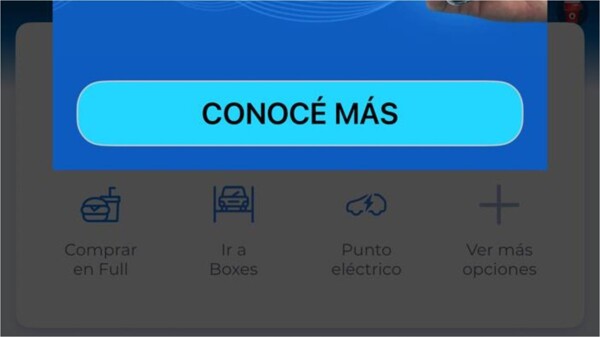
This CyberMonday once again demonstrated the strength of e-commerce as a sales channel, even in a context of restrained consumption. Cloud stores across the country registered over 30 million visits, with consumers who were much more planned and selective, highlighted Franco Radavero, General Manager of Tiendanube in Argentina. According to the executive, although the growth levels of previous years were not reached, the ecosystem managed to sustain the record demand of 2024, which he described as a "highly positive data point" in the current economic scenario. "We observe a more analytical, more reflective consumer who avoids impulsive decisions in the short term. Over 6.4 million users connected to the CyberMonday 2025 website between Monday and Wednesday, and the average ticket was located at $66,307, with a total of 78,218 receipts issued, representing a 12.6% increase over the 2024 edition, according to statistics provided by Facturarte. However, the leading e-commerce unicorn platform in Latin America, Tiendanube, provided other figures: it counts in total more than 450,000 operations, 6% more than in 2024, with an average ticket of $99,295, which means a 16.5% year-over-year jump, it quantifies. The amount of purchases, in one case or another, decreased from the $122,000 recorded in the initial morning of the event, and interest-free installment payments stood out, reflecting the high purchasing power of most participants. The highest initial average was justified by the high value of early purchases of refrigerators, air conditioners, cell phones, notebooks, washing machines, and televisions. But on the next day the trend changed, and sneakers displaced home appliances as the most sought-after product. In addition, searches for fryers, bicycles, and fans increased, which suggests a more exploratory behavior, with impulse purchases motivated by convenience and price, without abandoning the most traditional categories. The statistical interpretation was ratified by the survey of the Pensar Lab laboratory, dependent of the Fundación Pensar, according to which, although 29 million Argentines perceive themselves as middle class, if real income levels are taken, only 20 million would fall into that category. To be considered middle class, approximately between 2 and 5 basic food baskets are needed ($1,176,852 in September, according to INDEC). Based on this data, 7 million Argentine households are middle class, 8 million are low class, and less than 1 million are high class, according to the Pensar Lab report. Visits are not purchases. Another demonstration of the difference between what was and what is was given by the fact that interest in learning about the offers far exceeded the click to add to cart on the pages of the thousand participating national and international brands, and even on Tuesday night there was a peak of 150,000 people connected simultaneously, reported the Argentine Chamber of Electronic Commerce (CACE). In any of these variants, the large online fair of discounts and promotions took place in a challenging economic scenario, where the more than 60,000 active stores in Argentina consolidated the digital channel as a refuge in the face of the slowdown in consumption. And even, the brands that sell with their technology registered a 25% year-over-year growth, reaching a total sales figure of $44,434 million. The largest billing corresponded to Electronics, Home and White Line, followed by Fashion, Beauty, and the big surprise, Supermarket, which this year consolidated as one of the best-performing segments. Deco and Home consolidated as the category with the highest growth, with a sustained increase of five percentage points per event. In terms of payments, credit cards remained the most used means, with 52% of operations, followed by bank transfers (26%), virtual wallets (8.5%), debit cards (11.5%), and cash (2%). 60% of purchases were made in one installment, while 23% were in three, 13% in six, and 4% in nine or more installments. Regional proportions. From the breakdown, it emerges that the most active provinces in digital consumption were Buenos Aires (38.34%), followed by CABA (16.43%), Córdoba (6.7%), Santa Fe (4.9%), and Mendoza (3.4%), according to information provided by Facturarte. And that in terms of logistics, home delivery and pickup in stores remained the most chosen options, with an 8% growth compared to 2024. 83% of sales were sent home via logistics operators, while 17% were picked up in physical stores or sales points, data that reinforces the trend towards convenience and flexible delivery. A marked decrease is recorded in the clothing vertical, while we see that the food and beverage segment shows an increase compared to the same period of last year's Cyber Monday," affirmed Franco Terzakian, CEO of shipnow.














